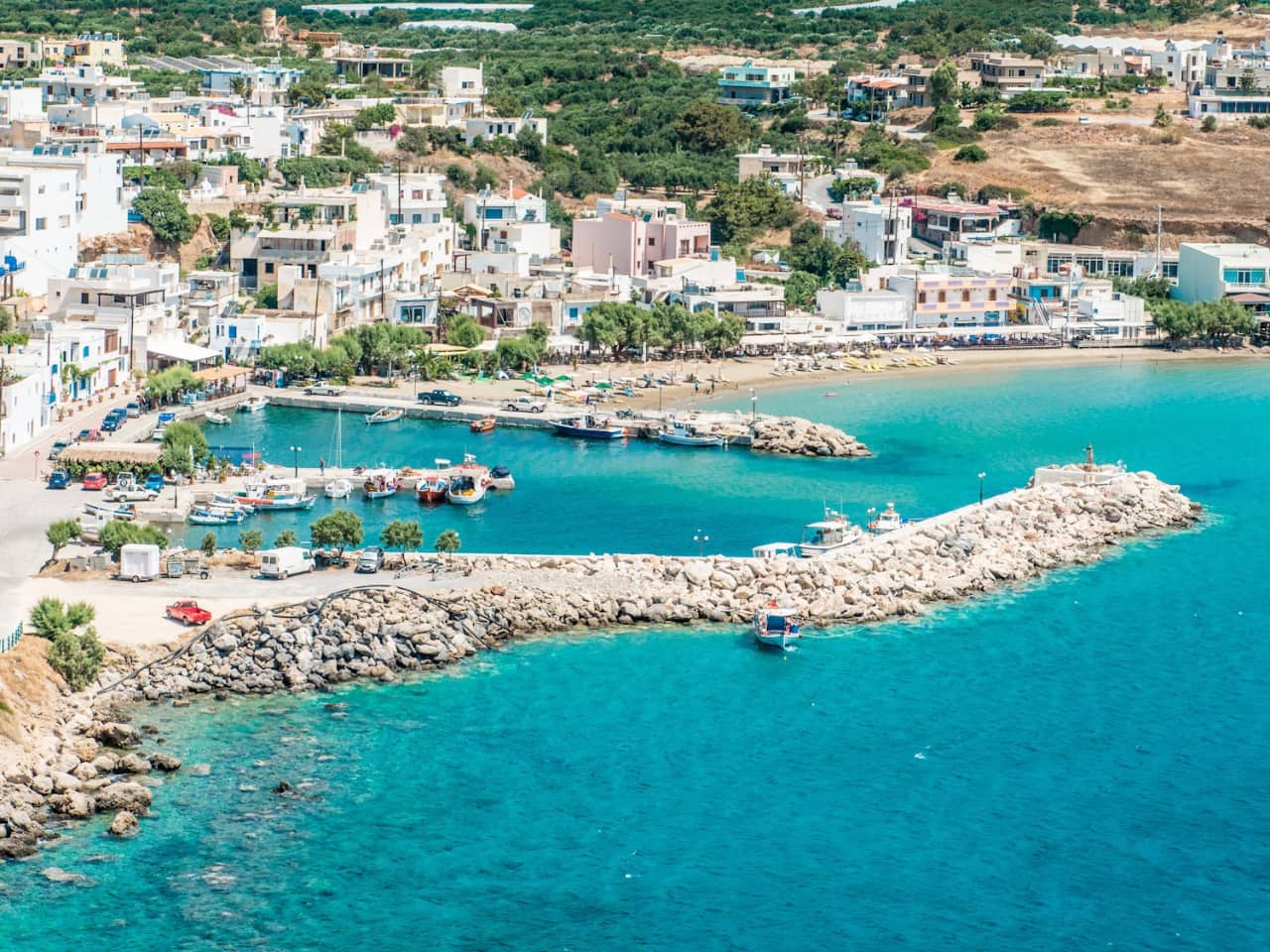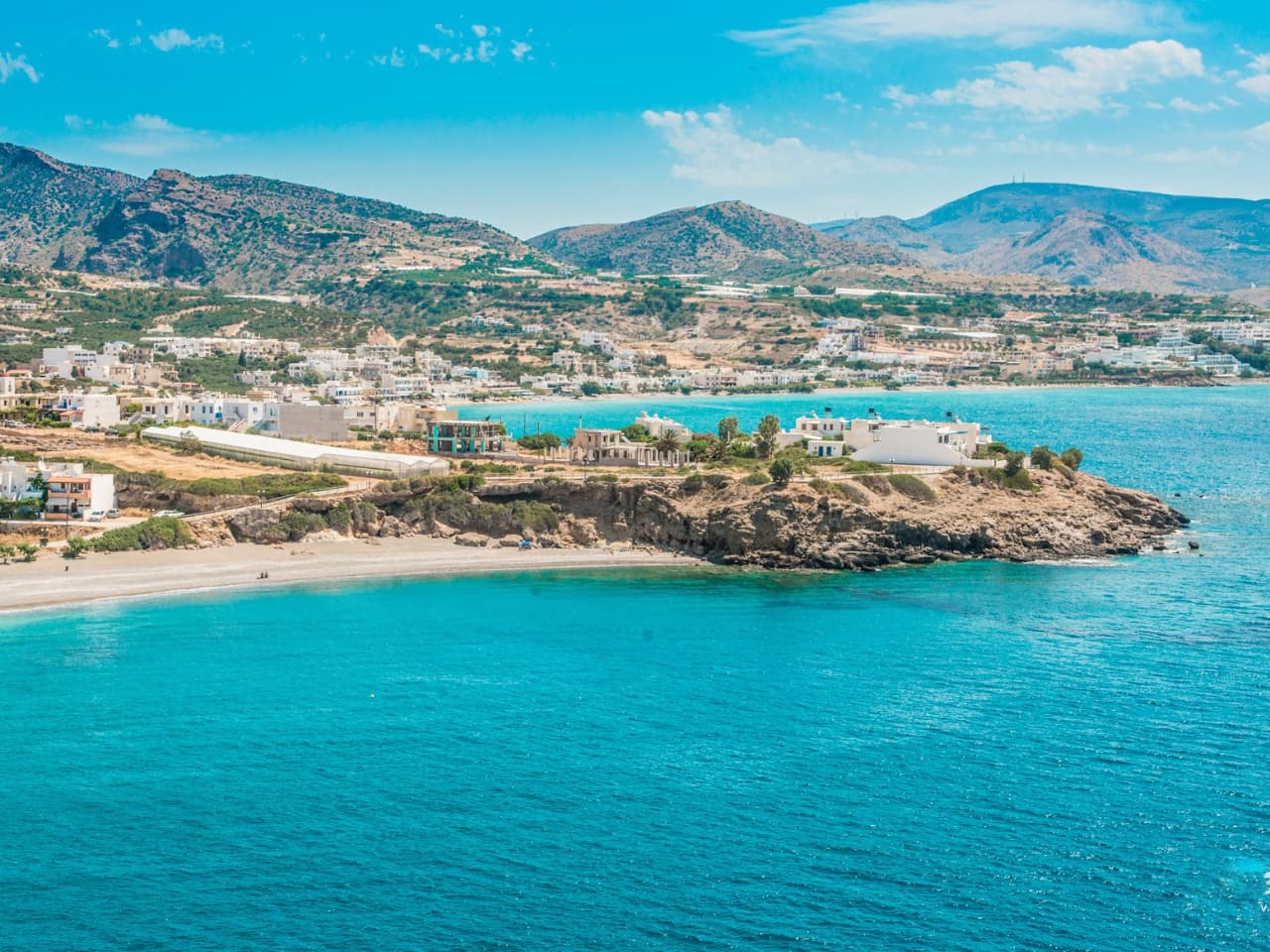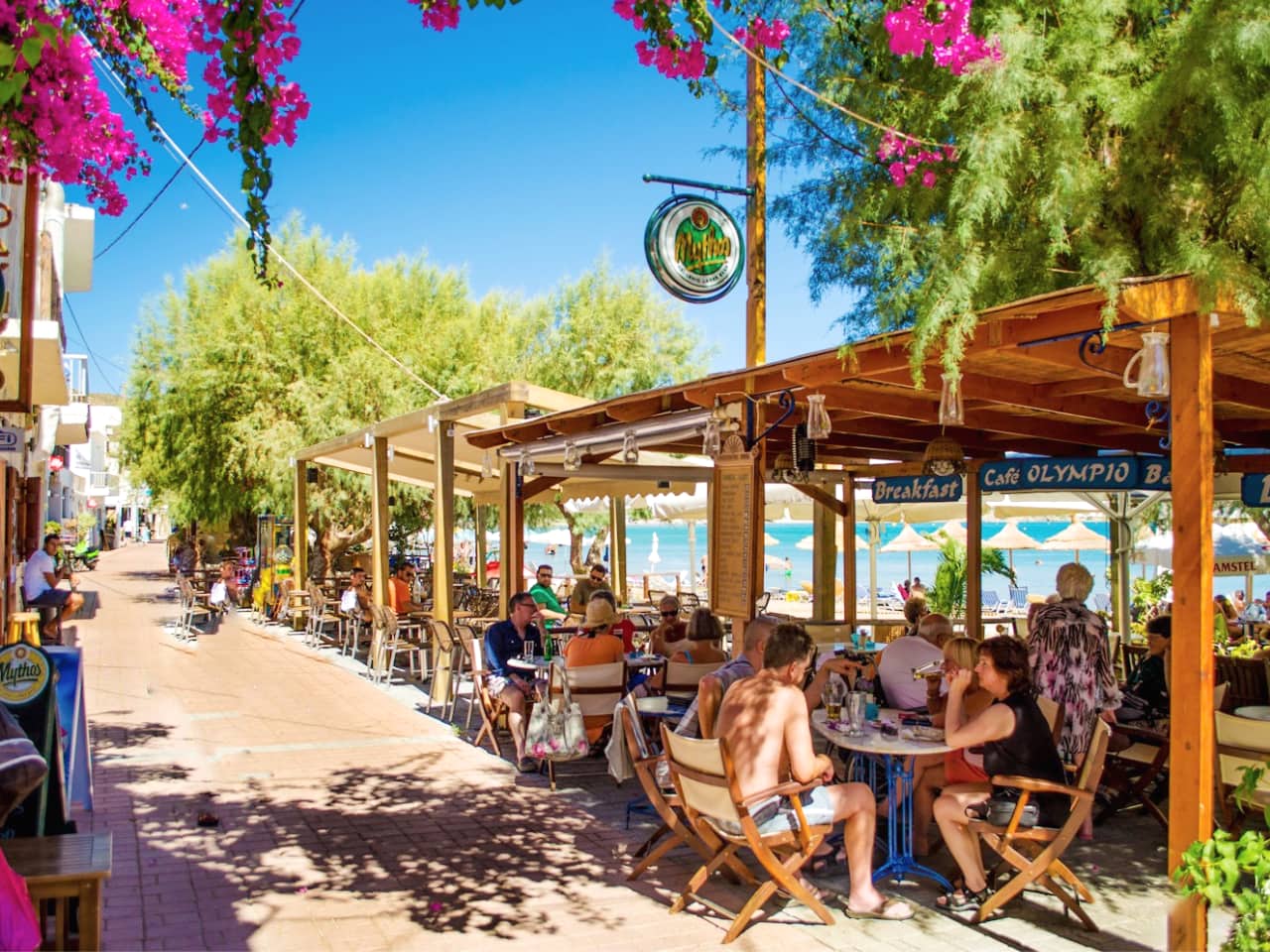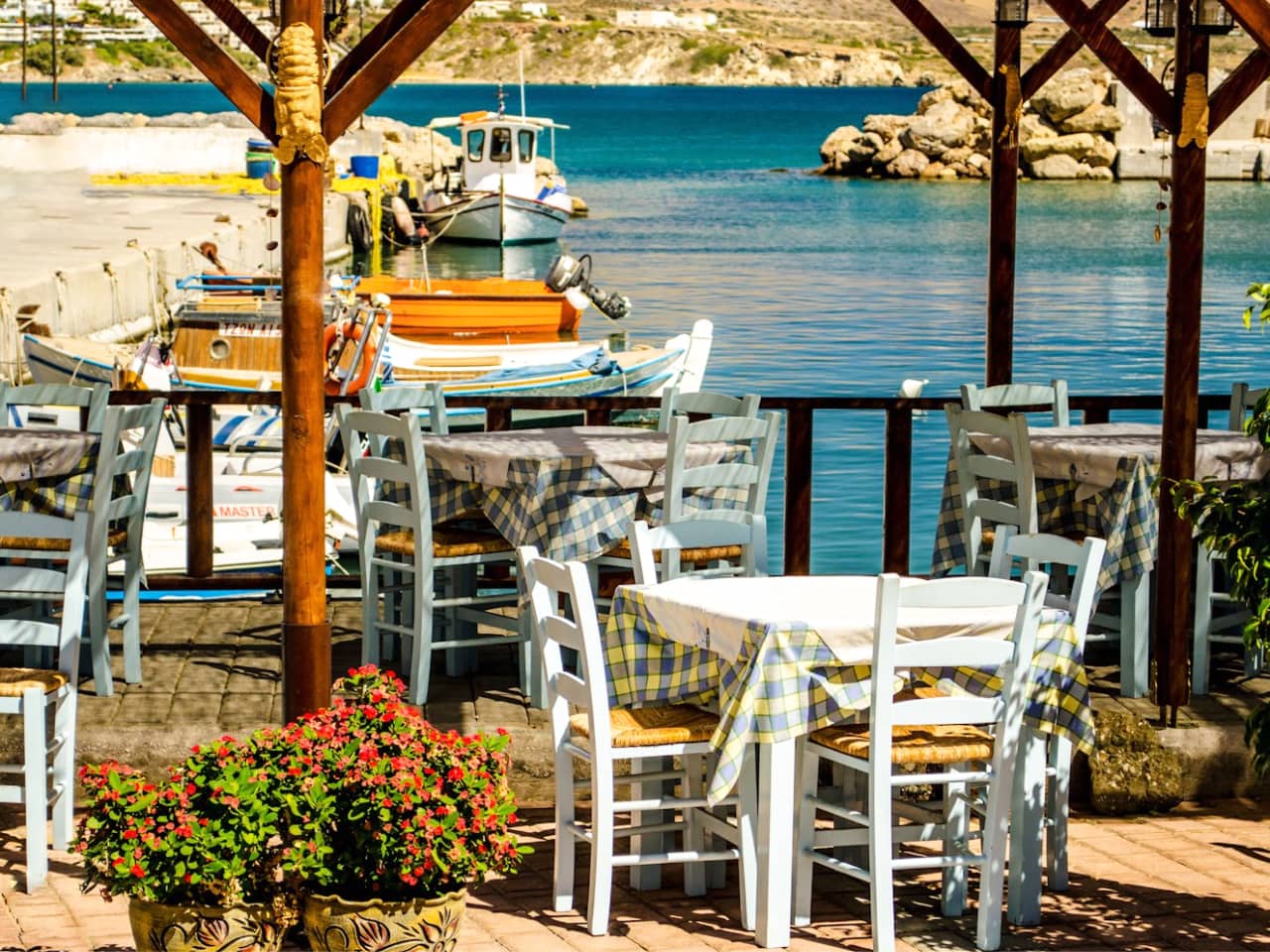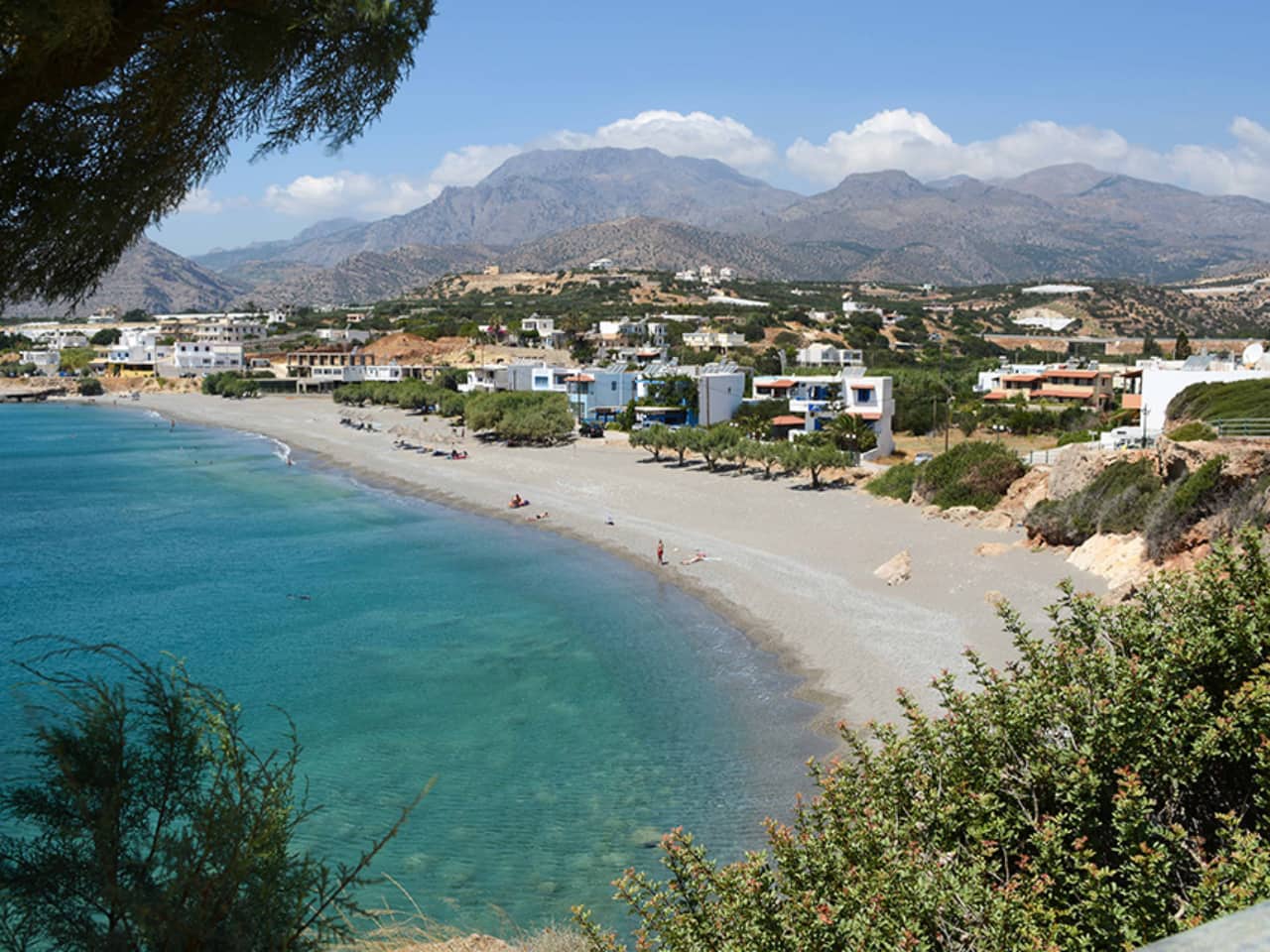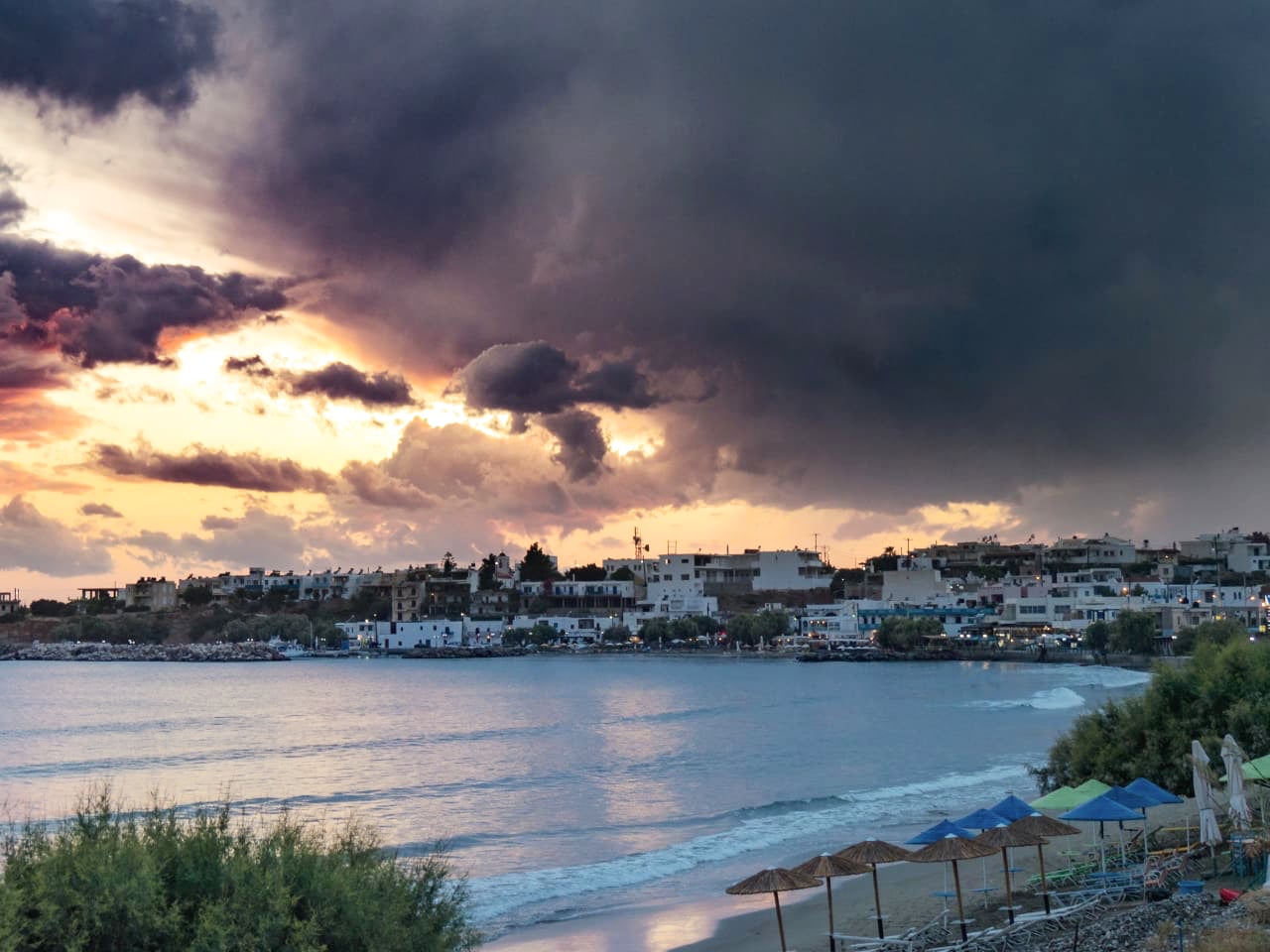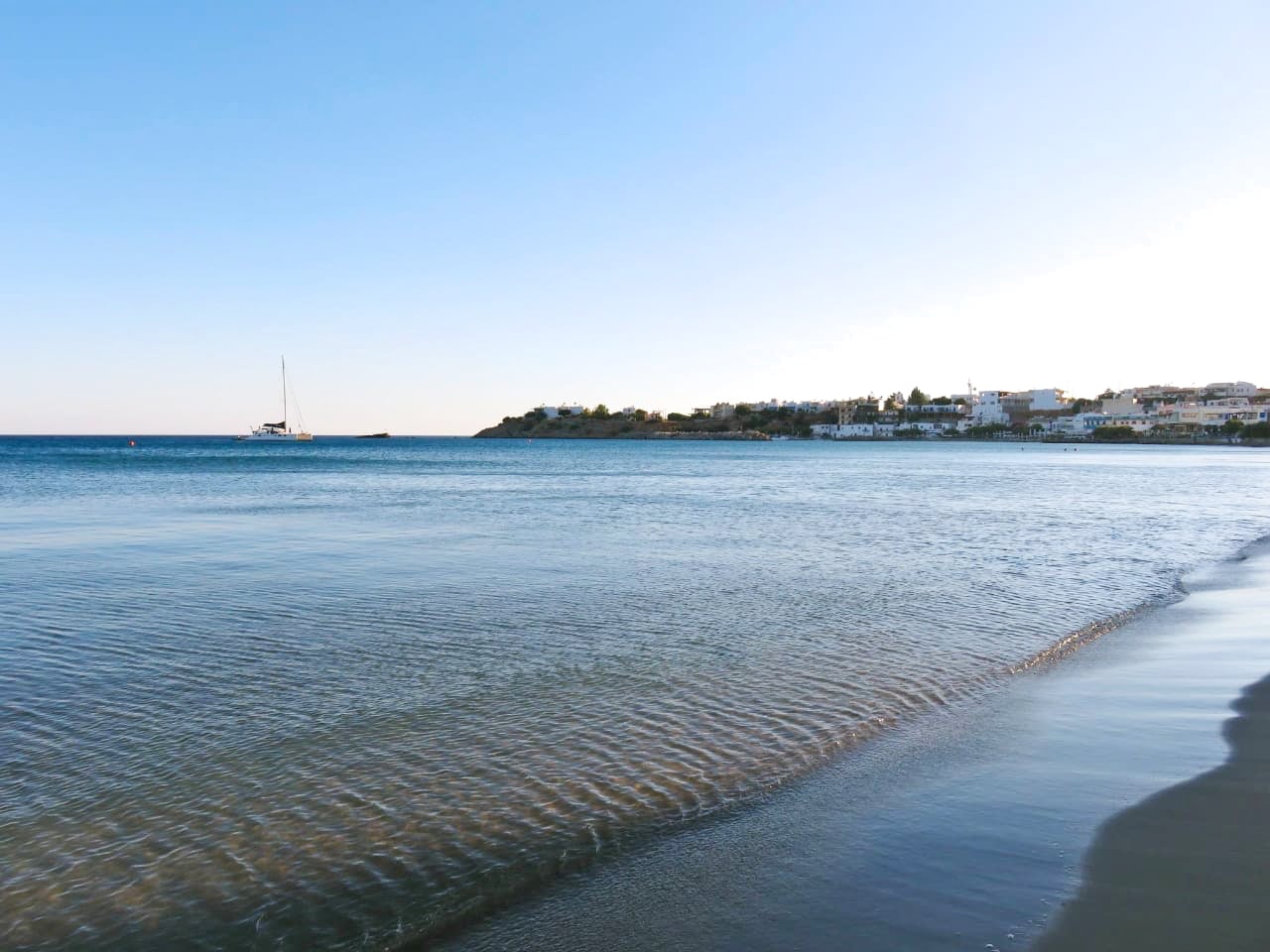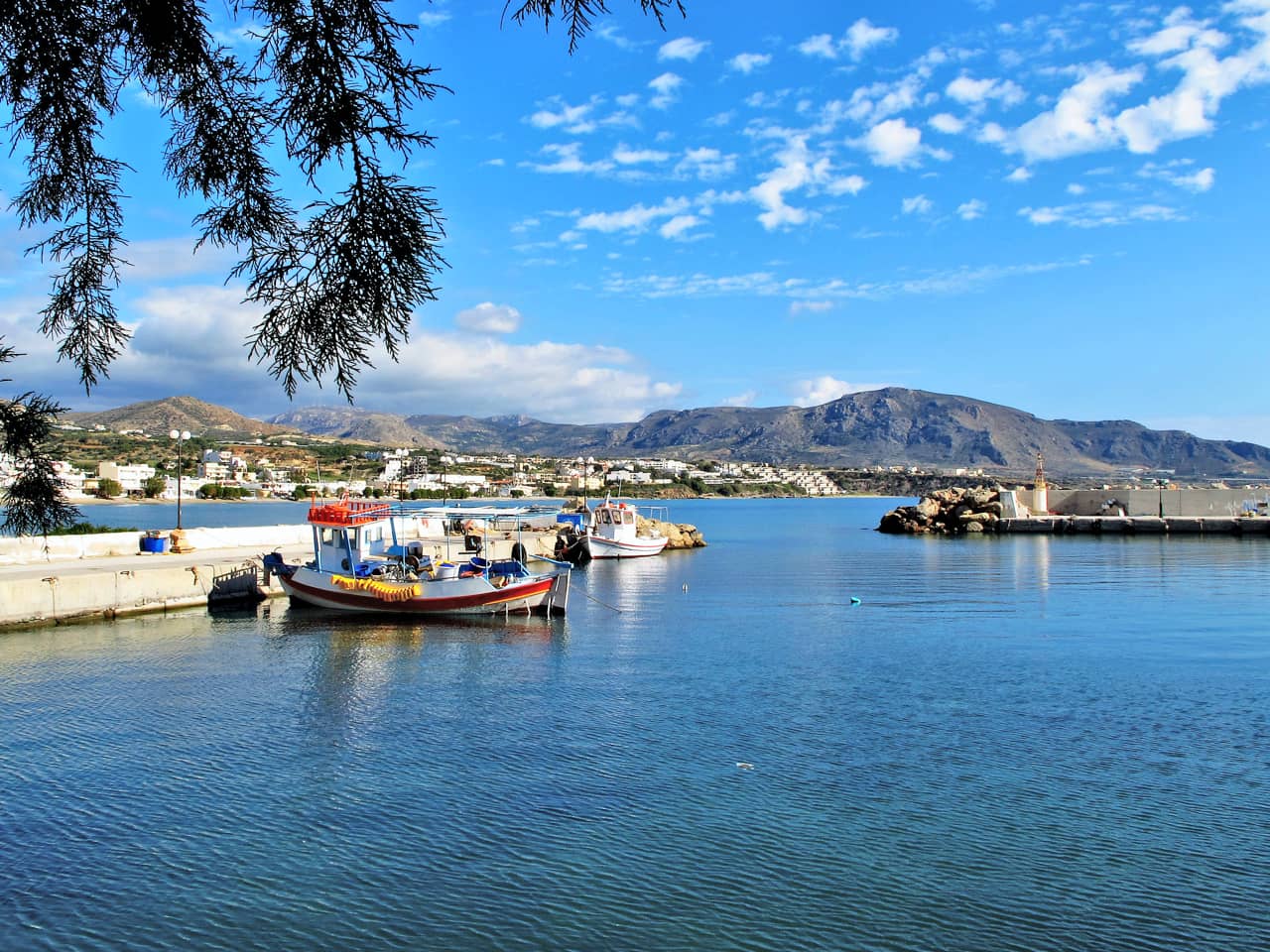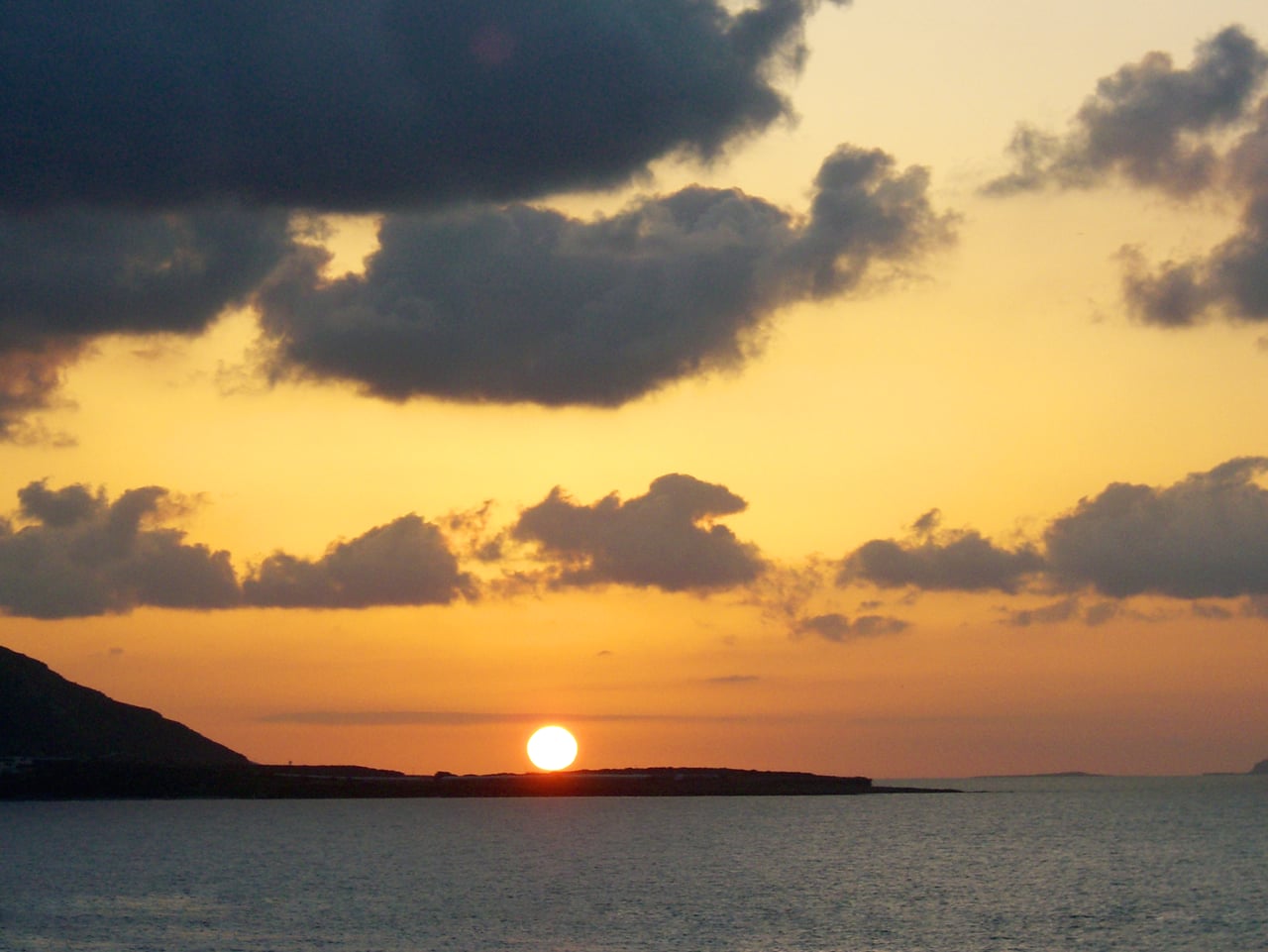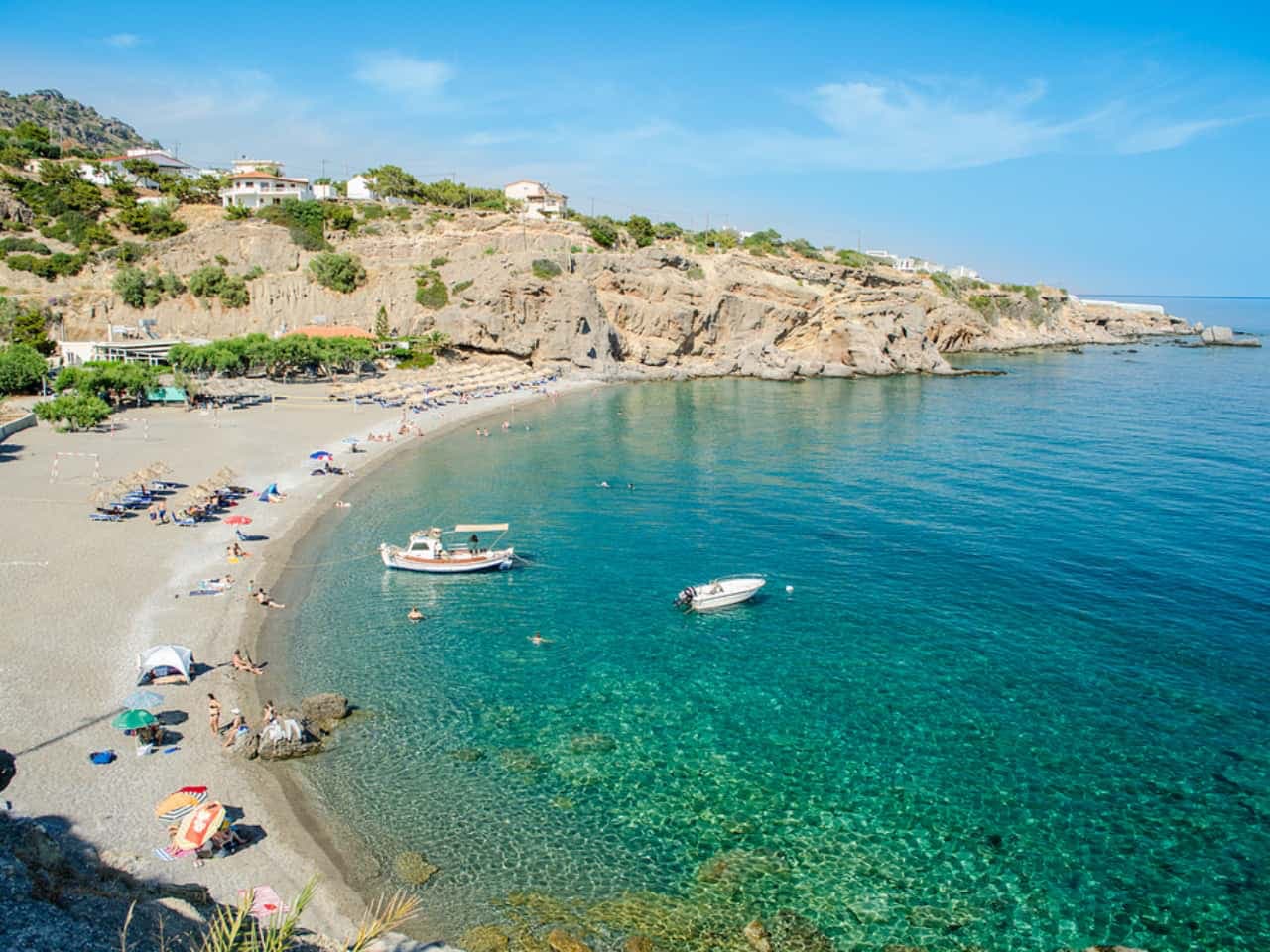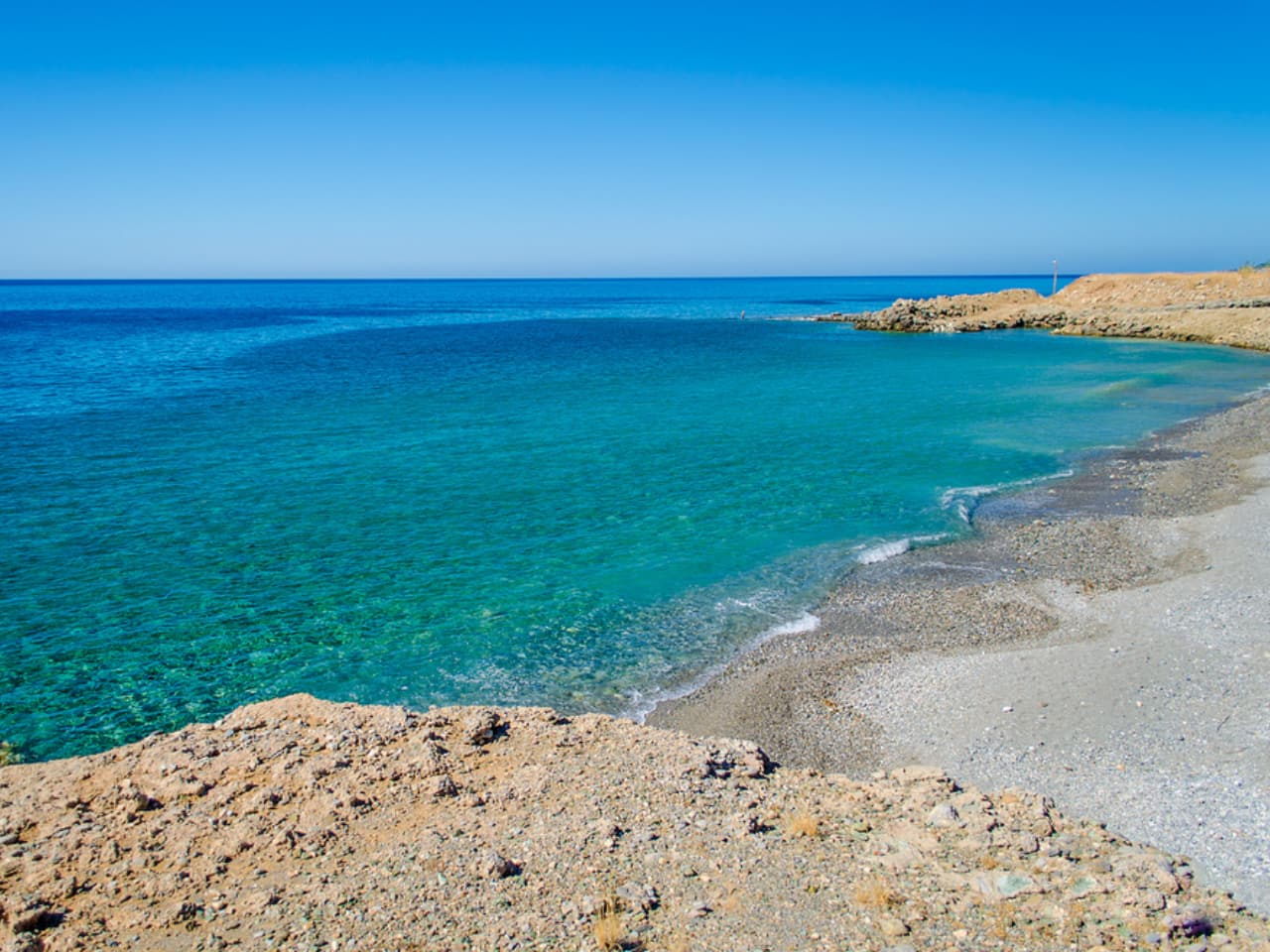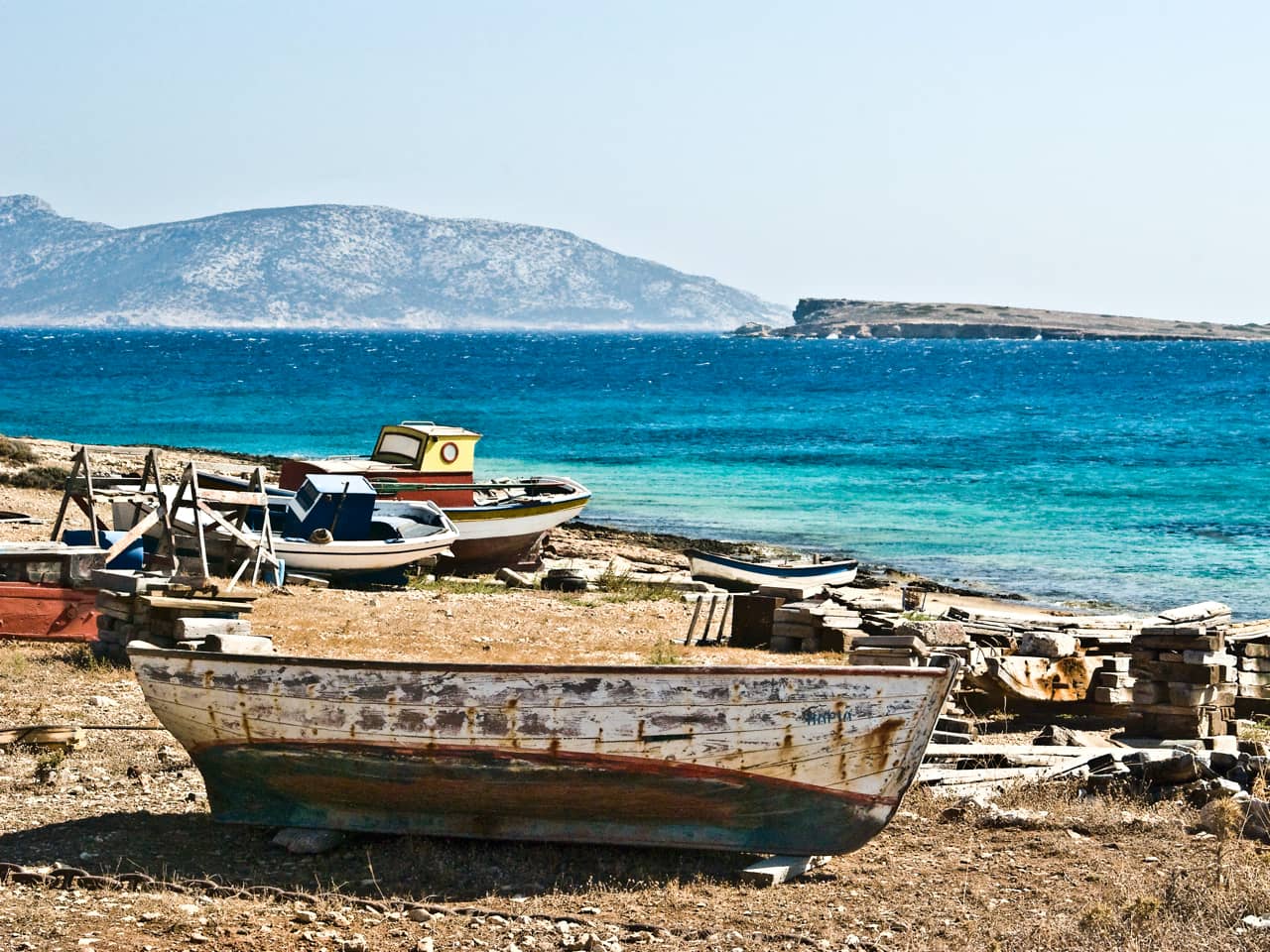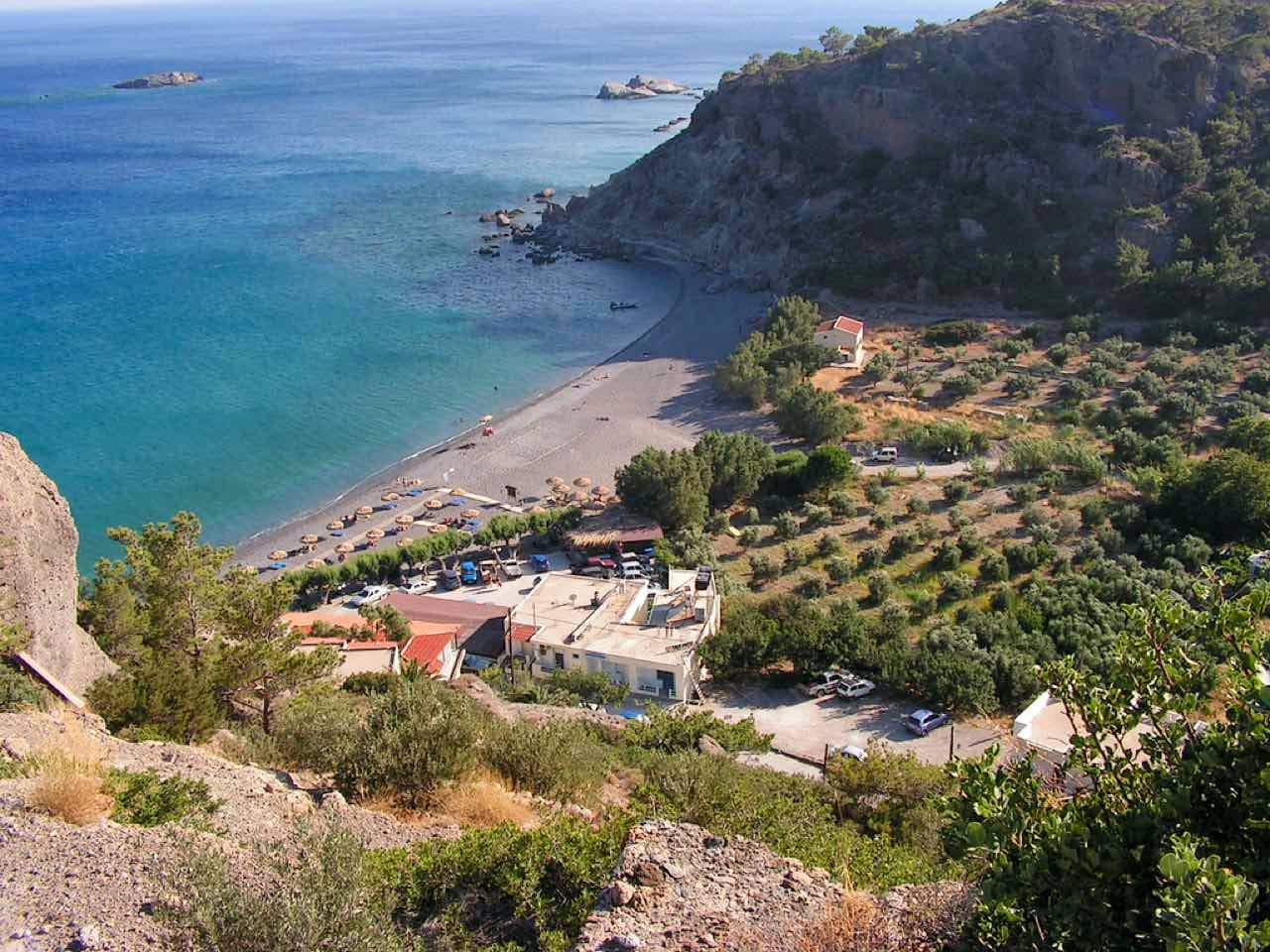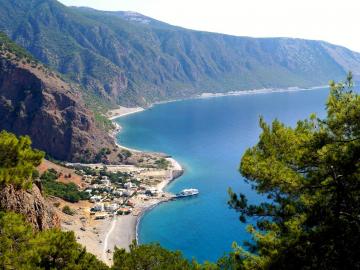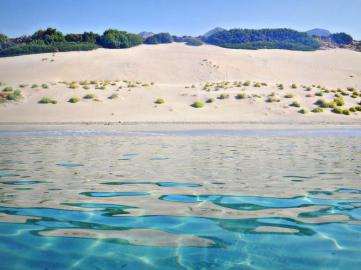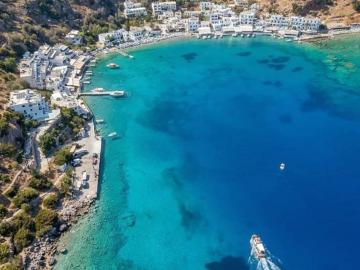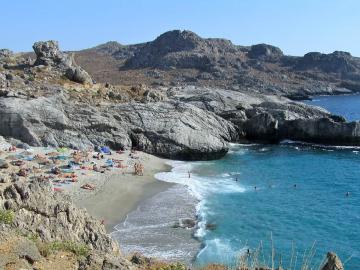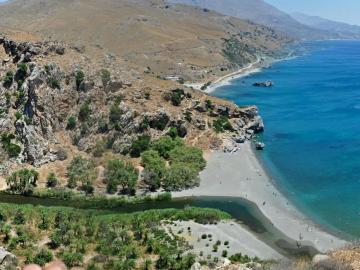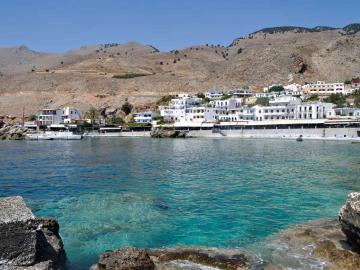description
Makrigialos is a find and has one of the best beaches at this end of Crete, with tavernas and sand which shelves to gently that you begin to think you are going to walk the 320km to Africa.
Some way from any major or developed tourist towns, it lies east of Ierapetra, in Eastern Crete, a 30-minute drive, along a coastline filled with a number of secluded bays and quieter beaches.
Easy access to and from Sitia, a one hour drive. The older-seeming harbor area has some character-full cafes and tavernas; this place is special.
Makrigialos could be usesd as a base for exploring the beauty of the wider area of South-East Crete. Apart from the beautiful beaches stretching from Ferma to Goudouras, it is worth visiting the surrounding villages, walking in the canyon of Pefki or in the lush Orino Gorge.
In Makrigialos town you can visit the local churches, the Roman Villa in Katovigli and the Minoan villa at Plakakia (1500-1450BC), which followed the architecture of Minoan palaces.
Though it virtually merges with neighboring Analipsi, where the main beach is, the two are different in character.
Both parts of what is now really the same village, are framed in front of an impressive mountain backdrop with gorges that are more accessible and every bit as rewarding as the Samaria Gorge.
The harbor area is where we'd be tempted to go and meet friends, spend a long time reading, or just idling away some relaxed times.
The large sweep of sandy beach offers a selection of hotels, apartments, and rooms for rent. It also has some well-conceived and decorated restaurants, cafes, and bars, feels casually-stylish in the evenings (mostly casual!), and also provides a local and not excessively tourist-trodden atmosphere - we're looking forward to going back.
The name Makrys Gialos derives from the long and sandy beach, about 2 km, from the village. The clear and shallow waters are ideal for both children and adults alike. The main beach of Makrigialos is by no means the only one; the area is famous for its numerous beautiful beaches.
Near Makrigialos and next to the extraordinary beach of Kalamokania there is the Minoan villa. The villa was built around 1600 B.C. and it is comparable to the structure of the Minoan palaces, most likely it was the private residence of a local ruler. However, excavation has not been completed and so the site is not yet open to the public.
Makrysgialos was originally a small fishing village, but during the last few years,the area has been built up to accommodate the growing demand for tourist destinations.
However, it is still a quiet location, ideal for those looking for a relaxing holiday.
How to get there
- By Bus from Ierapetra the enjoyable coastal drive takes about 30 minutes. The drive to Sitia about one hour.
- By Air: From May through mid-October there are direct charter flights to Sitia and Heraklion Airport. Tickets can be bought in advance for almost all flights via our partner website.
- By Sea: The journey is the thing". A superb way of enjoying the journey to Crete is to fly to Athens and take the ferry from Piraeus (Pireas) - the port serving Athens. A still-romantic way to travel by the overnight ferry from Piraeus to Heraklion Port. Tickets can be bought in advance for all ferries via our website.
- By Car: If you want to explore the region while you're here, we recommend that you rent a car, other means of transport are limited and/or infrequent. We suggest our sister website, which offers competitive prices and you can collect your car at either airport.
- By Taxi: Book your taxi transfer online easily and safely from the airport or port to any location via our website.
Where to stay
There are apartments, small hotels - many choices in the standard to medium price range.
Akrotiri Apartments is our choice. On a headland about 150 meters from the harbor which it overlooks together with the whole Makrigialos Bay. Apartments and studios sleep 2-4 people, good for families, great views and balconies. Everything is well maintained, freshly painted, and quite modern. Well-planted garden areas between each accommodation are a plus.
Aspros Potamos is our other choice in a protected valley gorge a whisper inland from Makrigialos and its beach, early-Cretan genuine houses offer back to basics and tranquility.
The White Houses of Crete, three stylish cottages, and two apartments (sleeping 2-9) converted from fishermen’s houses, right on the harbor of this sleepy small village of Makrigialos in eastern lovely Crete.
Please see our links to local hotels at the bottom of this page.
What to see & do
- There are many fine villages in the Region of Makri Gialos, all with their own particular merits. It is well worth hiring a car to visit these villages, sample some of the local atmospheres, hospitality, and culture, visit their splendid and historic churches and enjoy spectacular views as most are mountain villages. Aori, Agios Stephanos, Azali, Bembonas, Chrysopigi, Lapithos, Lithines, Orino, Pefki, Pervolakia, Schinokapsala, Stavrohori.
- Small excursions should include the Kapsa Monastery above the gorge of Perivolakia (about 10 km east of Makrygialos) and the remains of the medieval village of Vóila. You can also make longer trips to the famous palm beach of Vaï (but don’t go in July or August when it gets sadly crowded), the excavations of the Minoan palace at Kato Zakros, and the so-called Gorge of the Death, the lively seaside town of Agios Nicolaos on the northern coast, the Lasithi plateau famous for its 7,000 (or so) windmills, or, closer to ‘home’, the island of Koufonisi, to see the remains of the ancient Roman theatre and to go for a swim from the wonderful sandy beaches.
- There are numerous fine beaches in the Makri Gialos region. Whilst the most popular during the summer is the Makri Gialos main beach, which offers all facilities including water sports. You can also reach several other beaches within a short walking distance.
- To the east of Makri Gialos, there are two beaches below the Sunwing Hotel, reached by walking down the right-hand side of the hotel past the bungalows belonging to Sunwing. Further east takes you to Diaskari beach, which has wooden pergolas shading sunbeds and hammock sand is home to a small traditional taverna.
- Further still, by taking the road to Kalo Nero, you will reach Amathi beach and several other small coves and beaches which are often deserted although there are no facilities on the beaches.
- To the west of Makri Gialos, the first beach is Kalamokania, further on there are beaches along the coast Koutsouras and Mavros Kolimbos and very attractive horseshoe-shaped bays at Agia Galini and Agia Fotia.
- Pefki Gorge is a small gorge and runs down from Pefki village to Makry Gialos and it is 7 kilometers long. If you take a walk through Pefki village and Pefki Gorge, you will see that, apart from pine trees (pefka in Greek), the earth is blanketed in kermes oak, lentisc, olive and carob trees, while the villagers’ greenhouses are luckily located further south, in the plain of Makry Gialos and Goudouras. Starting from Pefki, you pass through the olive groves to Ilias’s Watermill, one of the oldest watermills still standing, which functioned until the early 1920s. Right after the watermill is the entrance to Pefki Gorge, whose walls reach a maximum height of 120 metres. The walk down the gorge is along a pretty and picturesque route through the pine wood. You will also see plane trees and other common Cretan vegetation, such as thyme and sage bushes. On the south side of the gorge is a spring of fresh drinking water, so it’s a good idea to fill a bottle with cold mountain water to take with you. There have been a few minor human interventions in the gorge, so don’t be surprised to see a wide footpath and stone benches at some points. Luckily these features have not spoilt the scenery and character of the gorge, as they have been realized as part of the European Leader Programme. On leaving Pefki Gorge you come to Pisokamino, and 500 m further down is the village Aspros Potamos, where there is a huge rock, the “Volakas tou Sarakinou” (“Saracen’s Rock”). Legend has it that a Saracen pirate left behind in a raid hid there to escape the Cretans hunting him. On the rock, you will notice small, egg-sized pebbles. This has given rise to various stories and theories. The commonest tale is that, during the wars, the locals suffered much hunger and hardship. So the children played a game: every time they passed the rock, they would toss a pebble onto it. If the pebble rolled off the rock, there probably wouldn’t be any food at home. If it stayed on the rock, there would be warm, nourishing food waiting for them. This is supposedly how the pebbles got on the Volakas. A short distance from the Saracen’s Rock is the village of Aspros Potamos, where the tarmac road either leads back to Pefki village or continues on to Makrys Gialos.
- Explore Pervolakia Gorge, which starts right next to Kapsa Monastery, 7 kilometers from Makry Gialos, and ends at Pervolakia village, from which it takes its name. You can leave the car at Kapsa Monastery and either visit the small pebble beach or enter the gorge, which is the rockiest in the area but also the most impressive. Pervolakia Gorge is usually traversed by challenge-seekers, as it’s not very easy to walk. Some sections are relatively inaccessible and you may need to do some climbing. The average time it takes to walk through the gorge is 2 hours. You will then reach the village of Kato Pervolakia, where you can call a taxi if you have left your car at Kapsa Monastery. So make sure you’ve got the phone number of a taxi driver from Makry Gialos, or hitch a lift from someone leaving the village.
- Explore Koutsouras Gorge, which links the villages of Koutsouras and Oreino, and you may hear it referred to as “Butterfly Gorge”. The entrance to the gorge is on the Koutsouras side, in the Community Park. From there it is 3-4 hours’ walk to Oreino village. In spite of its name, you won’t see many butterflies inside the gorge, as in recent years they have only appeared in the spring. This is probably due to the huge wildfire that broke out in 1993 and devastated much of the local woodland. Ever since, locals note, the balance of the area has been disturbed and the butterflies are gradually disappearing, especially in the last few years. Despite the fire damage, however, Koutsouras Park is a lovely place with dense vegetation and rich plant and animal life. There are marks blazing the trail through the gorge, but be careful as you might get confused. At the end of the track through the gorge, as you approach Oreino village, there are small springs and beautiful waterfalls (in the winter months). On reaching Oreino, you can sit down for a refreshing drink of fruit juice at the kafeneion in the village square. Oreino is quite high up, so it’s cooler here than seaside Koutsouras - just the thing on a hot summer day!
- Drive to Kato Zakros and hike the Kato Zakros gorge, which is also known as "The Gorge of the Dead" because the Minoans used to bury their dead here in small crevasses high up in the walls of the gorge. It forms part of the E4 walking trail and you can easily walk through it in about an hour.
- A bit further from Makrigialos is Chochlakies Gorge. The trekking route starting at Choclakies will take you about two hours to go and another two to return. The gorge follows a turn to the left, along sheer cliffs. You are mostly moving on the river bank (it is inaccessible in winter), and in spring you should be prepared to climb some rocks, to overcome the water ponds on the way. At the end of the route you will be rewarded with the view of Karoumes beach, solitary and beautiful, with trees that offer their shade freely for you to rest. You can also make a start from the village of Agahtias and the route is the following: Palaikastro – Agathias – Platyvola Plateau – Skinias beach – Karoumes beach – Karoumes gorge – Choclakies – Palaikastro. You will need about four hours to complete this second route.
- Havgas Gorge at Kalamafka Village just 12km north of the city of Ierapetra. Note that there are several other gorges with the same name around Crete, such as the Havgas Gorge in Lassithi Plateau. The canyon is very beautiful and has distinctive rock formations, which have been shaped by rare geological phenomena. In many places, the rocks host "artistic" creations of nature, carved over time by wind and water. It is relatively short in length and walking along the riverbed is very easy, even for beginners. The altitude of the area is approximately 500m, ideal for the development of a beautiful pine forest. Unfortunately, the canyon and the surrounding area have been burned several times by fire, thus the size of the pine forest has shrunk. However, it is worth visiting the area and it is sure that you will be impressed by the small-sizes pine trees springing up among the rocks, resembling bonsais. The depth of the gorge reaches 300 m. At one point, two slit rocks form the entrance of some consecutive caves, which were used as a hiding place during the German Occupation by the Cretan rebels and the Allies. The region is called by locals "Chinese Landscape", taken after the smooth rocks with the bonsais. Next to the gorge exit, you can visit the village of Kalamafka with its taverns and gurgling water. Moreover, nearby you can visit the ancient olive oil mill and the churches of St. John and St. Anthony.
- More exciting activities in East Crete.
Where to eat & drink
Makrigiallos Village has plenty of Tavernas, and is just a 1-minute stroll away, with a string of old-fashioned tavernas serving fresh-grilled fish, home-baked vegetarian dishes, and the always best choice for Summer Greek salad, all accompanied by a good wine or maybe a retsina.
Other good options, Olympio café serves good snacks and pizzas, or there’s an Italian restaurant in neighboring Analipsi. For a bizarre dinner experience, drive to Kalo Nero (20 minutes east) to dine at the foot of an illuminated grotto, the ‘Dragon’s Cave’; or head west to Kalliotzina taverna in Koutsouras village for yummy, unpretentious home cooking from 2 sisters, overseen by a silent granny.
Location
Honest Reviews
The reviews for the Makrigialos
